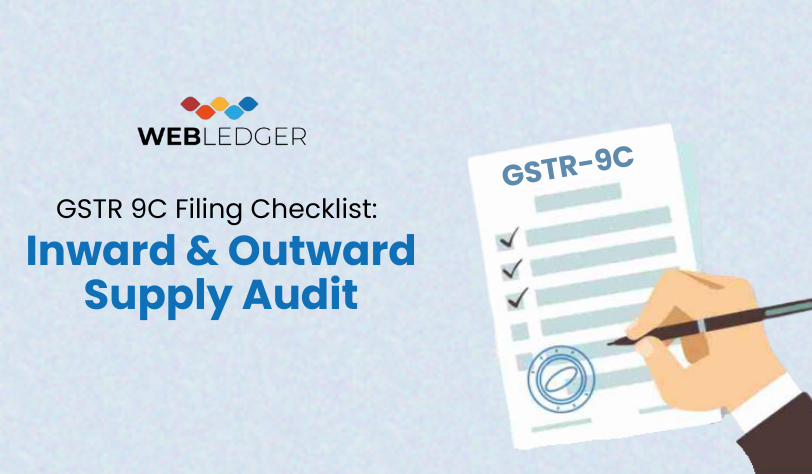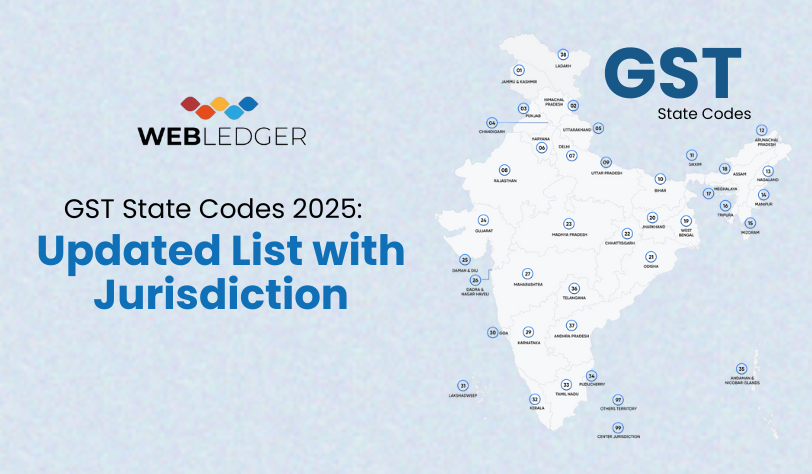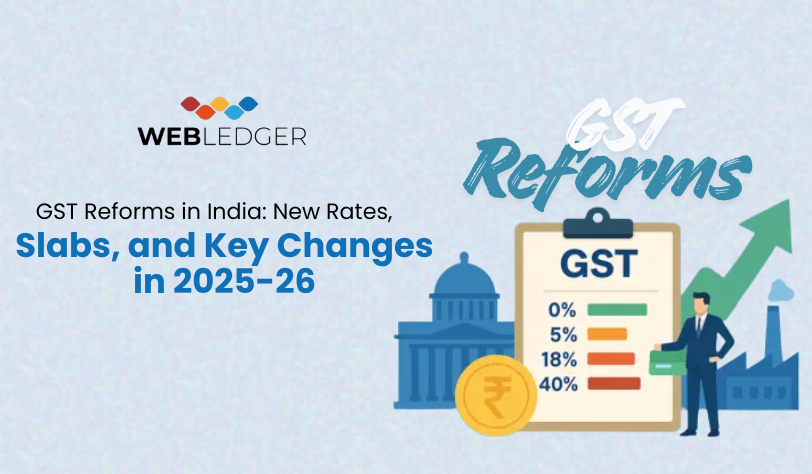Being in business, whether you own a startup or a well-established firm in India, involves monitoring your finances. You receive revenue, but you also have expenditures. Do you know where each rupee goes? If you’re still relying on files full of receipts or dis-organised spreadsheets, you could be lacking valuable insights and may be overspending. Learn how to track business expenses smartly and efficiently.
Monitoring or tracking your business expenses is not about how much you spend. It’s about knowing where you spent it, why you spent it, and how it impacts your profits. It’s about being aware, making smart decisions, and ultimately boosting your profits.
This blog will guide you through important steps and tools to efficiently track your business expenses. It will guide you from being a reactive spender to becoming a smart financial manager.
Why You Should Track Expenses Smartly: The Key Benefits
Let’s discuss why expense tracking smartly is essential for your business.
Better Accounting
Please enter the OTP below to proceed.
Clear Financial Picture: Knowing exactly what you spend helps you understand your financial health. This understanding is vital for seeing your profit, cash flow, and overall business performance.
Better Decision-Making: With a detailed view of your spending, you can see areas where you spend too much or where you can save money. This information helps you make better financial choices in the future.
Easier Tax Preparation: Collecting your expenses can be hectic, especially during tax time if your records are disorganised. Being able to track your spending accurately allows you to locate and claim all the deductions that you qualify for, and this will save you money.
Improved Budgeting and Planning: Looking at your history of spending, you are able to make practical budgets and predict future expenses. This allows you to plan effectively and prevent improper financial surprises.
Control Over Cash Flow: Monitoring your cash flow out lets you catch problems before they become major issues. This means you’ll always have sufficient funds to cover your bills when due.
Compliance and Auditing: Certain companies are required to monitor expenses closely by law. Even if not required, having organised records simplifies any audits.
Finding Areas to Make Improvements: Looking over your expenses can enable you to spot inefficiencies. You may notice you’re spending too much money on a supplier or service.
Building Blocks: Essential Steps to Intelligent Expense Tracking
These are effective steps to track business expenses well:
1. Segregate Business and Personal Finance: This rule is the most crucial. Mixing personal and business spending makes it difficult to handle. Open a special bank account and use a distinct credit card for all commercial activities. You will save lots of time in the long run.
2. Organise Categorical Expenses:
Have a mechanism for categorising expenses. Common ones are –
a) Office Supplies: Products such as stationery, printing, and software subscriptions.
b) Marketing and Advertising: Cost of online ads, website hosting, and promotion materials.
c) Travel and Accommodation: Business travel and client meeting costs.
d) Salaries and Wages: Employee payment.
e) Rent and Utilities: Costs of your office space.
f) Professional Fees: Payment to accountants, lawyers, or consultants.
g) Equipment and Maintenance: Expenditures for purchasing and maintaining business equipment.
Make them specific enough to provide valuable insights but general enough not to be overly complicated. You can modify your categories as your business evolves.
3. Establish a Documentation System: Record all business expenses. This involves keeping records of:
a) Receipts: Maintain physical or electronic copies of all purchases.
b) Invoices: For services or goods you have received.
c) Bank Statements: To verify your transactions.
d) Contracts and Agreements: For recurring expenses.
Get into the habit of sorting these documents on a regular basis. Don’t let them pile up!
Also read: Faster Accounting Tools Designed for Traders & SMEs
4. Select the Right Tools:
You don’t have to use spreadsheets anymore. There are many apps and accounting tools that can make expense tracking easier.
a) Spreadsheet Programs (e.g., Excel, Google Sheets): Suitable for small-scale companies with minimal requirements. You can design your own templates, yet it will consume a lot of time and result in errors if done manually.
b) Expense Tracker Apps: These apps are meant to track expenses with ease. They usually allow you to scan receipts, automatically categorise expenses, and connect to bank accounts and credit cards.
c) Accounting Software: Accounting software has numerous features aside from expense tracking, including invoicing and payroll. They provide you with an overall picture of your business finances and have robust expense management features.
Also read: Why Digital Accounting Is the Future of Business
d) Cloud-Based Solutions: Utilising cloud-based tools protects your data and allows you to access it anywhere. This is convenient if you have a remote workforce or travel frequently.
Choose tools based on your business size, complexity, and budget. Start with what works for you now and can grow with your business.
5. Set a Regular Review Schedule:
Tracking your expenses is an ongoing task. Dedicate time regularly, either weekly or monthly, to review your expenses.
a) Verify Accuracy: Make sure all transactions are categorised correctly and documented.
b) Identify Discrepancies: Check for any unusual or unexpected expenses.
c) Review Spending Habits: Review your spending report to identify where your money is being spent and look for patterns.
d) Compare to Budget: If you have a budget, compare your spending to what you budgeted.
6. Use Technology for Automation:
There are many expense-tracking tools that can save you time. These include:
a) Bank and Credit Card Feeds: Import transactions automatically into your expense tracker.
b) Receipt Scanning with OCR (Optical Character Recognition): Automate receipt information capture.
c) Automated Categorisation Rules: Establish rules to automatically categorise routine expenses.
d) Report Generation: Automatically generate spending reports and financial summaries.
7. Give Training to Your Team:
If your employees accumulate business expenses, ensure they’re aware of your expense-tracking rules. Give them tools and training to submit accurate and timely expense reports.
8. Back Up Your Data Regularly:
Always backup your financial information, whether through spreadsheets or through sophisticated software. This avoids loss due to technical issues or human error. Cloud-based options tend to automate backups.
Also read: Smart Business Software for Effortless Daily Operations
Diving Deeper: Getting the Most Out of Your Expense Data
Recording expenses is only the beginning; you must also analyse the data to derive useful insights. Here’s how to maximise your spending report:
a) Identify Your Largest Spending Categories: Which of your budgeted categories are taking the largest portion of your money? Knowing this can help you know where to cut back.
b) Track How Spending Changes Over Time: Is your marketing spending increasing? Are your travel dollars fluctuating? This can be useful in understanding future spending trends.
c) Check Actual Spending Against Budget: On a regular basis, compare your actual spending against your budget. Investigate any significant discrepancies and why they happened and adjust as necessary.
d) Compute Key Financial Ratios: With your expense information, locate key financial ratios, such as your expense ratio (total expense divided by total revenue). This indicates how effectively you are utilising your resources.
Pinpoint Areas of Cost Savings: Go through your expenses report thoroughly. Are there any wasteful items to reduce? Can you drive a good bargain with suppliers?
Track the ROI of Expenses: For expenses such as marketing or training, measure their return on investment (ROI). This lets you know which investments yield the highest returns.
Things to Consider While Selecting Expense Management Software
While choosing the expense management software, take the following things into account:
Ease of Use: The program must be easy and convenient for you and your staff to use.
Features: Ensure it has features such as receipt scanning, categorisation, reporting, and compatibility with other tools.
Scalability: Select software that can expand as your business expands.
Integration: Find out if it is compatible with your current bank accounts, credit cards, and other business software.
Cost: Examine the pricing model and determine whether it suits your budget.
Mobile Accessibility: If you and your team frequently spend money while on the move, mobile apps are vital.
Customer Support: Make sure the supplier provides excellent customer support.
Best Practices for Smart Expense Tracking: A Recap
Below are some essential best practices for smart expense tracking.
a) Separate business and personal finances.
b) Set clear and consistent expense categories.
c) Record each expense thoroughly.
d) Select the appropriate expense tracker or accounting software for your requirements.
e) Check your expenses regularly and review your spending report.
f) Automate the process wherever possible.
g) Train your staff on expense tracking procedures.
h) Back up your financial information regularly.
Conclusion
Get a grip on your spending. Keeping track of your business expenses is more than just paperwork; it’s an important part of keeping your finances in order. With the strategies and tools in this guide, you can gain better control over your spending, make better decisions, and assist your business in becoming more profitable.
Stop guessing where your money goes and start knowing. Start tracking your expenses smartly today and learn rich insights into your money data. WebLedger Books helps you record and manage your expenses, thus making doing your accounting hassle-free. Switch to WebLedger Books today and explore these features. Sign up and register for a free demo today.




